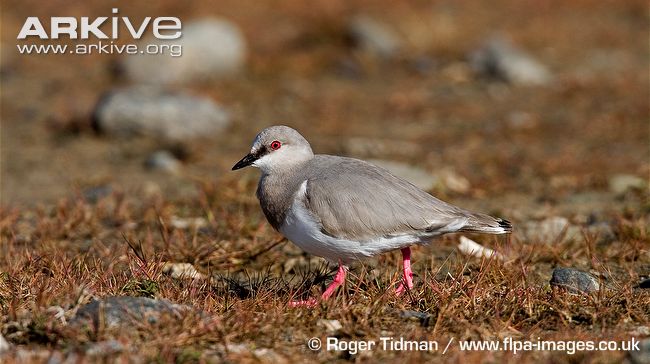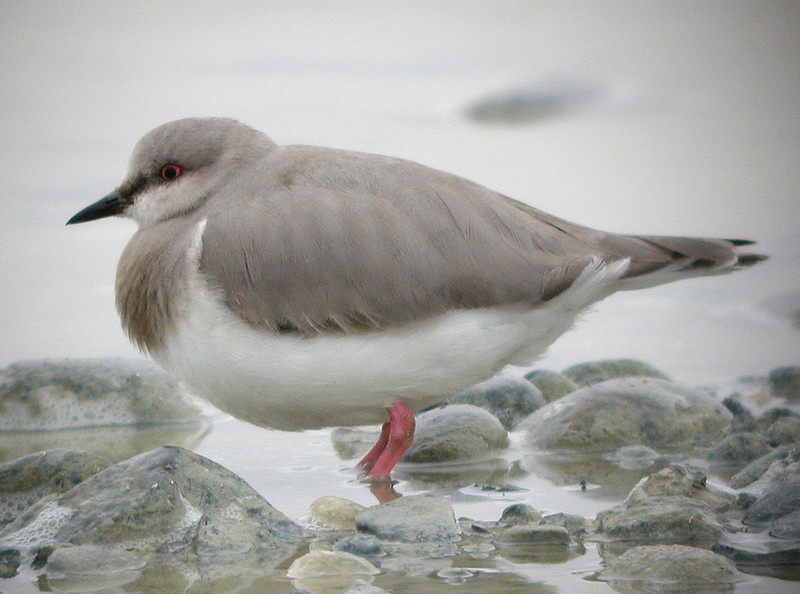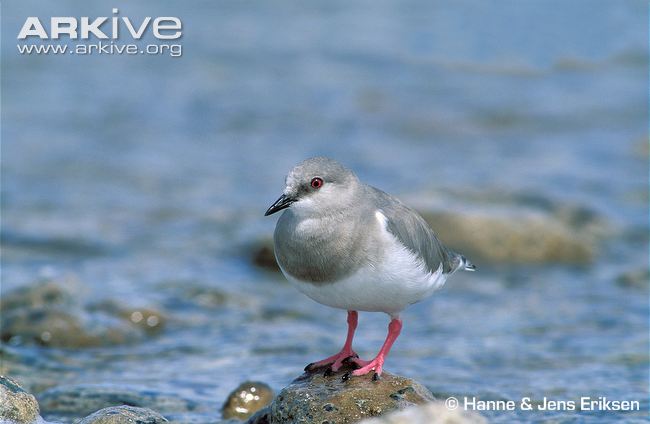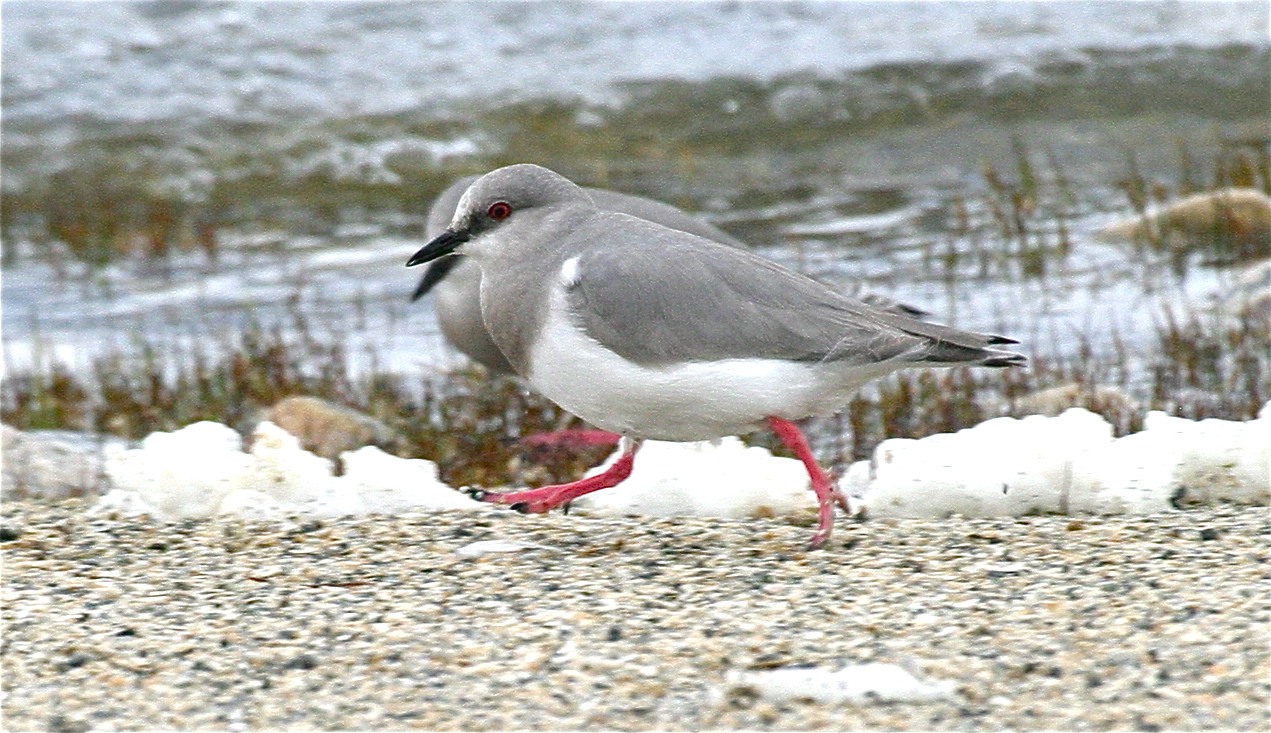
Pluvianellus socialis
SUBFAMILY
Pluvianellinae
TAXONOMY
Pluvianellus socialis G. R. Gray, 1846. Sometimes placed in its
own family, Pluvianellidae. Monotypic.
OTHER COMMON NAMES
French: Pluvier Magellan; German: Magelanregenpfeifer;
Spanish: Chorlito de Magallanes.
PHYSICAL CHARACTERISTICS
7.75 in (20 cm); weight: males 2.8–3.6 oz (79–102 g), females
2.5–3.1 oz (71–88 g). Upperparts, head, and neck are ashy gray
grading to a brownish gray on the upper chest and white on the
cheeks, throat, and forehead. Dark area between eye and bill.
Underparts are white. In flight a broad, white wing stripe is evident.
Bill is black with a small pink spot near base. Turnstonelike
in appearance. Iris is black. Legs are short and both legs
and feet are coral pink. Females are slightly darker and heavier.
In juveniles dorsal surface has golden tint, eye is white with
lavender tinge, and legs and feet are orangeish. First winter birds
have yellow mark at base of bill. Hind toe is well-developed unlike
other plovers.
DISTRIBUTION
Breeds in extreme southern Chile and Argentina, including
Tierra del Fuego. Winters northward to Valdez peninsula,
south-central Argentina, and occasionally as far north as
Buenos Aires province.
HABITAT
Breeds along shores of shallow fresh water or brackish lakes and
lagoons—most of which are glacial—in the steppe-like regions
of Tierra del Fuego and southern Patagonia. Winters mostly
along the coast in sheltered bays, lagoons, and river mouths.
BEHAVIOR
Pair members act as a unit in territorial defense. Most spend
the winter in sheltered bays and river mouths.
FEEDING ECOLOGY AND DIET
Feeds by pecking at the water surface and scratching the
ground with strong claws. They sometimes dig deeply into the
sand, which is uncharacteristic of shorebirds. They also flip
shells and bits of debris in the manner of a turnstone. Larvae
of chironomid flies are the primary winter food, but a variety
of tiny arthropods are eaten during the breeding season.
REPRODUCTIVE BIOLOGY
Some populations nest up to 3,900 ft (1,200 m). Separate
breeding and feeding territories are maintained. Breeding territories
tend to be linear (984–1,640 ft [300–500 m]). Nest
scrape lined with small pebbles and usually only a few feet
from water. Clutch size is usually two. Four-egg clutches occur,
probably the result of two females laying in the same nest.
Both sexes incubate eggs and care for young. Injury feigning
distraction displays are unknown. Hatching is asynchronous
and second-hatched nestling often starves. Relative to other
plovers, young are weak and remain in nest vicinity for several
weeks. Unlike other plovers, parents feed young—often by regurgitation.
Fledging occurs around 28–30 days, but adults
may feed young until at least 40 days old.
CONSERVATION STATUS
Near Threatened. Factors contributing to small population size
include hostile environment and the effect of grazing animals
and introduced herbivores on natural grasslands.
SIGNIFICANCE TO HUMANS
None known.
Photo Gallery of - Magellanic plover




 Animalia Life
Animalia Life